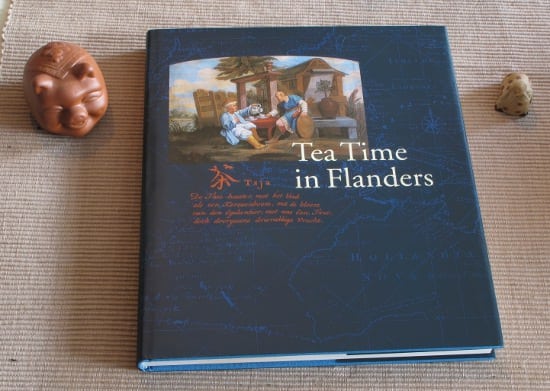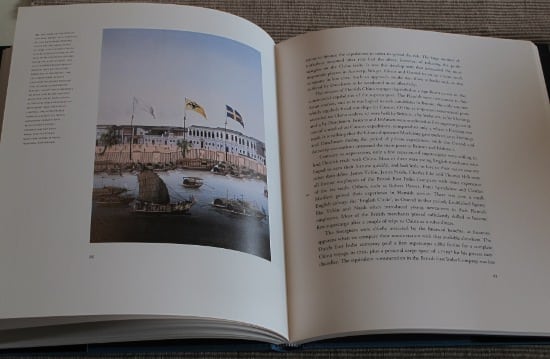The Dutch, the English, the French, the Portuguese, the Spanish and from a certain time onwards the Americans all traded with China over sea in the 18th century. I probably missed a few of the smaller traders. The one I missed on purpose is the one this post is about: Austria. Yes, that country closed in by other countries and having only access to a lake and not to a sea or an ocean. So how could they have a blooming trade with China?
Okay, I’m cheating a bit. Though just a little. During the 18th century Austria was more than the Austria we know today. It contained territories in Europe. One of those territories was Flanders, roughly the Dutch speaking part of that country that is currently the centre of the European Union and in the 18th century also called the Austrian Netherlands. So when I spoke of Austrian trade with China I actually was talking about the Austrian Netherlands or Flemish trade. To be honest I do not know whether other Austrian territories traded with the east.
The beginning
Before the direct trade with China started Flanders was under Spanish rule. After a period of war and European politics Flanders came under Austrian rule. The rules concerning trade were more free under the Austrians than under the Spanish rule. So from 1715 merchants sent ships to China. From 1715 to 1723 almost 40 ships were sent to the east. Not only to China, but also to Bengal, India and other countries. The ships left from several Flanders cities: Ghent, Antwerp, Brugges and Ostend. As happened in the other trading countries competition was hard and risks were high. So trading companies decided to join forces.
The GIC
In 1724 the first vessels sailed to the Orient under the new company: the “Generale Keijserlycke Indische Compagnie” or “General Imperial India Company” or “GIC”. The Flemish equivalent of the VOC and the EIC. This company was very successful and their shares wanted. The 3 million florins worth of shares were sold out in only 2 hours. Their missions were also quite successful. Although it was a small company compared to the VOC and the EIC.
Some details
- The British and especially the Dutch did not like the competition. So they forbade any dealings concerning the Flemish Tea trade. Of course they also seized some ships causing some traders to go bankrupt.
- The English forbade its citizens to work on a Flemish orient trade ship. The ships were stopped in the east and the crew checked. English crew was taken of the ship and sent back to England. It goes without saying that the crew-lists and names were a bit modified to prevent this.
- Most ships were fitted in England and some in the Netherlands. Especially during the merchant period.
- Especially in the beginning several high ranking people on board were not Flemish but English, Dutch or French and experienced in the trade.
- Most ships made a stop in Brazil for some extra trade and problem avoiding.
- The rest of their usual route was also different compared to the other companies. For example on their way to China, instead of turning North after Cape of Good Hope (where they were not welcome) they turned North at Amsterdam. (think about that one)
- After Auction ~80% of the tea was exported again. A lot to England, but the most to the Netherlands.
- The Flemish tea was considered better than the Dutch tea. This came because it was fresher. The Dutch traders were exiled to Java in those days, due to bad behaviour. But what else would you expect from the Dutch? Oh wait…
- The silver needed to buy the tea was mostly bought in the Netherlands and smuggled as non tea trade silver to Flanders.
- Most of the tea buying merchants came from the Netherlands, so auction advertisements were published in Dutch newspapers.
- The ships mostly carried tea
The end
The China trade was very successful, with profits up to 180% per ship, which was a lot in those days. So why did this successful trade end? As all good things: politics. And like many political endings it was not internal politics that caused the end, but external. Flanders was still part of Austria and the politicians in Vienna wanted Maria Theresa to succeed her father Charles the VI as empress of Austria. To make that possible they had to sign the “Pragmatic Sanction” with Britain, France and Holland. And guess what they wanted in return? Exactly, the elimination of the competition. So, like the big companies of our times use their power to eliminate small successful competition it was done and the Flemish tea trade was no more after 1734. And as politics goes the other countries broke their promises and started a succession war after Charles VI dead. It took till 1748 till Maria Theresa was recognized as empress.
The exhibition
There was an exhibition from April 10 till July 15 1996 in the Flagstaff House Museum of Tea Ware in Hong Kong about the tea trade between Flanders and China. I completely missed that exhibition, so I can’t say anything about it. However, like a good exhibition this one left a trace.
The book
The book that came with the exhibition stands on itself. It is a large book, but the text is also in a large font. Besides this text there is an abundance of photos (of models), drawings, maps etc. After several prefaces the book starts with an overview of the Flemish tea trade. After that chapters are spend on the sea route, the crew, life and trade in Canton and the book ends with chinoiserie in Flanders and its relation to the trade. After only 135 pages the appendices start. At the end of the book there is a short Chinese text, presumably a summary of the text in the book, followed by a Chinese translation of all the captions in the book.
It was nice to read and it clearly improved my insight in the tea trade and European history in the first half of the 18th century.
The book is no longer in print, but you might find one here or there. I was lucky and encountered a publisher sealed copy of the English version. There is also a version in Dutch.



Something more to look at.
Thanks.
Thanks for sharing, I always find history interesting, and much better if it’s about tea.
The Dutch were exiled to Java for bad behavior.
I chortled at that.
There was no Indian tea during this period. Whatever they got in India, it was not tea.
@thedevotea no one spoke about Indian teas. They traded with Asia in general (India, China and some other countries) and they brought back tea from China (or from resellers in India or Java).
@thedevotea I believe there was Indian tea during this period, Assam tea was grown by locals but I’d understood it wasn’t sold.
Here’s an excerpt from James Mill, The History of British India, vol. 3 [1817]
“The articles of which the import trade of the East India Company chiefly consisted, were calicoes and the other woven manufactures of India; raw silk, diamonds, tea, porcelain, pepper, drugs, and saltpetre. The official value of their imports in 1708 was 493,257l.”
I know that’s the East India Company and not the Flemish one mentioned here, but they too list tea. I’m confused.
The Assam tea was not discovered yet by the Europeans. So no trade that way. However the companies did not only trade with India, but with the entire region, including China (and Japan). I think that in the documents the entire region was seen as one or something like that. Same story goes for porcelain.
India also might have functioned as a trading place. But I doubt that in this case.
For the Dutch Java was a hub in the Tea Trade with the Chinese. They traded with China on Java. Although it was the first place where Europeans successfully managed to grow tea themselves. But that was later.